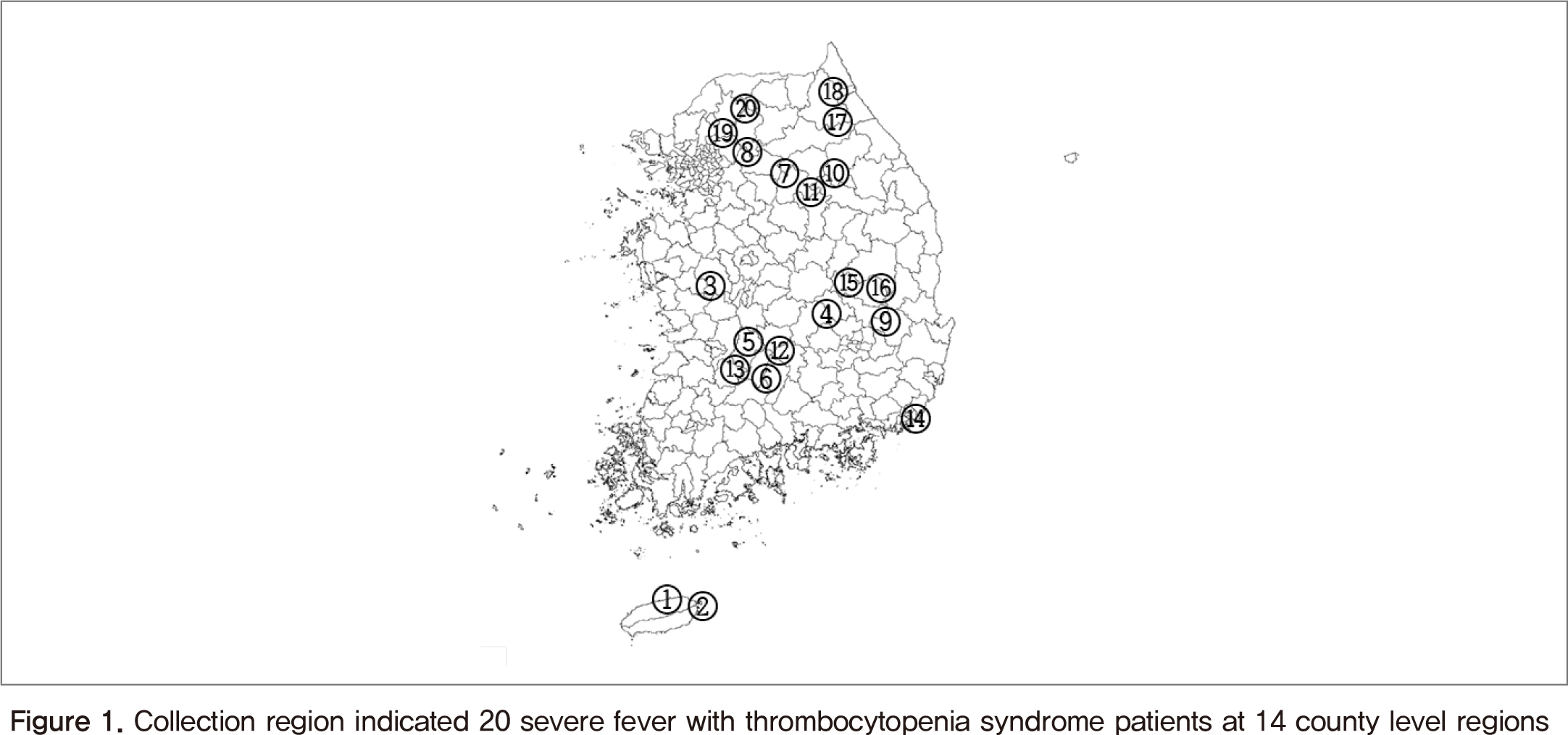contents area
Public Health Weekly Report
detail content area
- Date2019-09-11 19:49
- Update2019-11-19 18:28
- DivisionDivision of Vectors and Parasitic Diseases
- Tel043-719-7053
Survey of ticks based on epidemiological investigation of severe fever with thrombocytopenia syndrome patients in South Korea, 2018
Kim Seong Yoon, Lee EunJung, Song Bong Goo, Lim Hyung Woo, Roh Jong Yul, Cho Shin Hyeong
Division of Vectors and Parasitic Diseases, Center for Laboratory Control of Infectious Diseases, KCDC
The tick survey based on the epidemiological investigation of severe fever with thrombocytopenia syndrome (SFTS) patients was performed to find encounter/contact environments between patients and ticks. The predictable environments were categorized 3 groups as flatland, mountain-side hill and mountain according to their characteristics of landform. The category of survey area was divided by 13 sub-categories according to their status and usage. In 2018, we surveyed ticks and their SFTS virus at 74 environments of 20 SFTS case regions including Jeju islands. Mountain-side hill (n=47) was pointed out most visiting place by patients. We compared the tick density (flag index) at each environment and investigated SFTS virus in ticks. A total of 8,344 ticks were collected by flaggings and dry ice traps. Haemaphysalis longicornis was predominant species as 95.9% and nymphal stage ticks were collected by 73.9%. Tick density (flag index) at mountain-side hill (5.9) was higher than those at flatland (1.7) and mountain (0.9). In the view of plant traits, tick density was higher at ankle high-plants and at bracken inhabitation. The existence of sheds and grazing livestock increased tick density but weeding and chemical controlling decreased. In conclusion, the results suggested that a typical environment at which SFTS patients encounter ticks might be an ankle height grassland of mountain-side hill. Tick controls including weeding on restricted area might be effective to decrease tick population and designate ‘tick safety zone.'
Keywords: Severe fever with thrombocytopenia syndrome, Patient, Tick, Investigation








 This public work may be used under the terms of the public interest source + commercial use prohibition + nonrepudiation conditions
This public work may be used under the terms of the public interest source + commercial use prohibition + nonrepudiation conditions